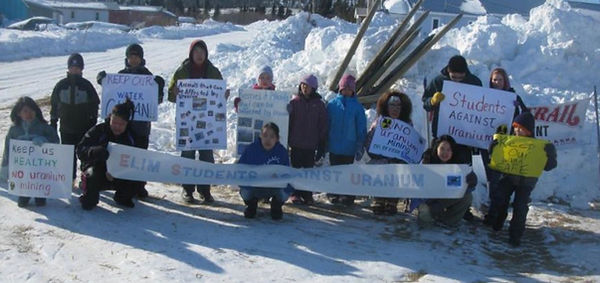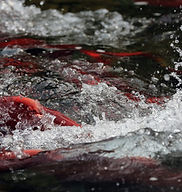
Protecting Water and
Subsistence Resources in the
Norton Bay Watershed
The traditional subsistence fishing and hunting practices of Native Villages in the Norton Bay watershed area are under threat due to climate change and industrial development. This not only endangers their economy and water rights but also poses a serious threat to their way of life.
What is Subsistence?
Subsistence is defined in Alaska state laws as the “noncommercial customary and traditional uses” of fish and wildlife. - Alaska Department of Fish & Game

Anti-Mining demonstration, NBWC Worked with Students in Elim Against Uranium (Photo Credit: Hal Sheperd)


Salmon on a drying rack (Photo Credit: Emily Murray)
Graphite Creek holding a minnow trap
(Photo Credit: Hal Sheperd)
What the Norton Bay Watershed Council Does
Monitoring and Research
The Watershed Council conducts instream flow & water quality research and data collection to study the impacts of climate change and resource extraction activities on aquatic habitat for the benefit of Tribal Communities in Northwestern Alaska.
Restoration and Planning
The Council develops and implements watershed restoration projects and collaborates with local tribal communities to create effective water resource management strategies.
Education and Advocacy
The Council provides education and outreach to increase awareness about the importance of protecting water resources, and advocates for the protection of the Norton Bay watershed at the local, state, and federal levels.

Water quality research at tubutulik river
(Photo Credit: Ken Takak)

Glacier Canyon Creek
(Photo Credit: Hal Sheperd)
Support us to protect our water resources
Local traditional knowledge is critical to protecting our water resources.
Your support is vital to the council's efforts to monitor, restore, and advocate for water rights in the Norton Bay watershed. Your donation would go to assist the watershed council to monitor the health of our rivers and the protection of subsistence and traditional resources.





